Looking back on Minnesota and Washington State DOTs’ inaugural artists-in-residence
Last week, we brought together the artists and agency staff involved in the nation’s first ever artists-in-residence at state departments of transportation to reflect on the inaugural year of the program. Speakers shared their reflections on the residencies, how they coped with the current pandemic, lessons learned, and plans for the future of these novel programs.
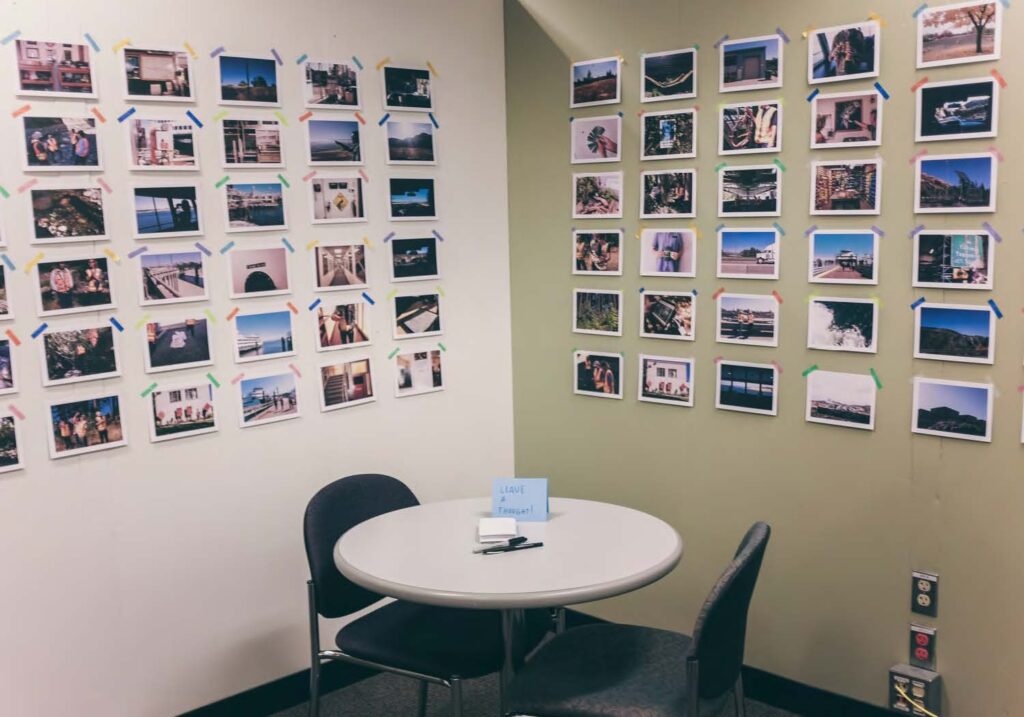
You can find the webinar slides here and the recording below.
The decades-old concept of integrating art within government has increased in popularity in the last couple of years as cities created a number of artist-in-residencies within their departments of planning, parks and recreation, transportation and more, as Ben Stone, director of arts & culture at Transportation for America (T4America), shared last week. But it had never been done at the state level.
It was clear to T4America that having an artist work within a state department of transportation could help the state better accomplish its goals and result in transportation projects that are more supported and beloved. This idea started to crystallize toward the end of 2018 when T4America approached MNDOT and WSDOT about hosting an artist in their respective agencies. T4America helped both agencies fundraise and design their programs, and since the launch in the summer of 2019 has managed the programs and hired the artists.
What made these residencies unique is that they not only were the first programs to occur at state departments of transportation, but at any agency at the state level.
In both the MnDOT and WSDOT AiRs, the intent was to bring a creative approach to advancing the agencies’ goals of improving safety, reducing congestion, promoting economic vitality, supporting multimodal transportation systems, and creating healthier communities.
WSDOT’s artist in residence
Artists Kelly Gregory and Mary Welcome, the artists handpicked for the Washington residency, exceeded the expectations of the WSDOT staff, according to Allison Camden, Deputy Assistant Secretary, Multimodal Development and Delivery at WSDOT. It was “heartening and cathartic for a lot of our staff to see Mary and Kelly capture our challenges so clearly, with ideas on how to address them,” she said. From the beginning Secretary Roger Millar considered it to be an exciting opportunity to bring a fresh perspective to the challenges of a transportation agency.
“People felt heard. They felt understood. And they felt valued. If I could do anything differently, it would have been to set up a two-year program.”
– Allison Camden, Deputy Assistant Secretary Multimodal Development and Delivery, WSDOT
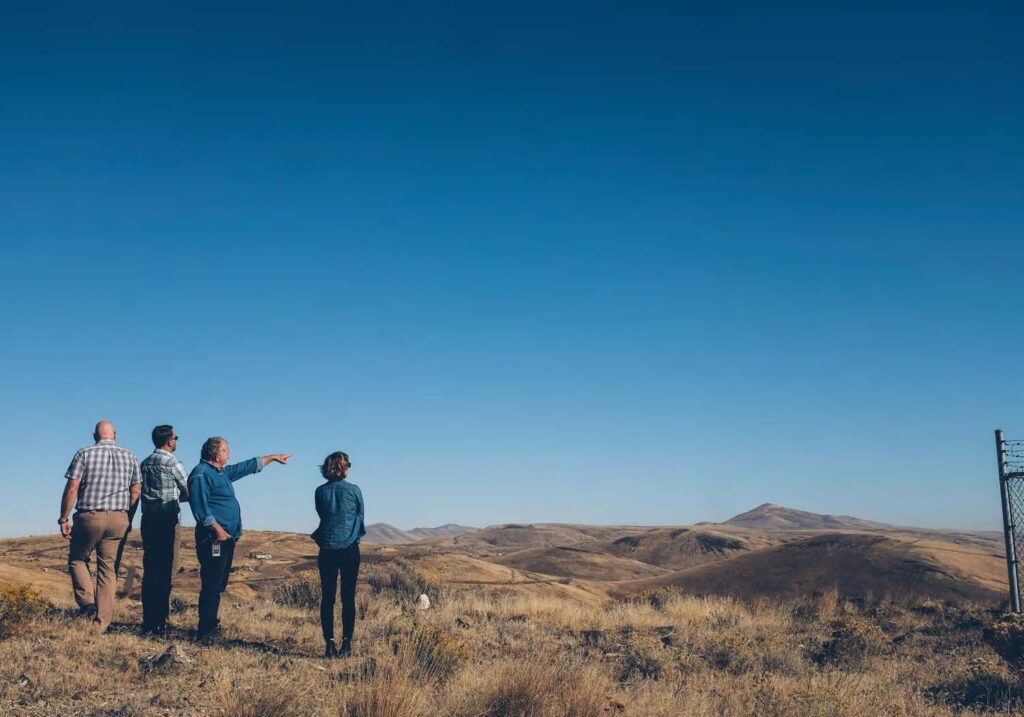
Gregory and Welcome’s approach included several months of listening and intentionally “getting lost in the weeds with WSDOT.” If you’re wondering what that actually looked like, they tracked it. They read exactly 69 different reports from different folks in the agency, interviewed 147 different people, traveled over 161 hours, conducted 600 hours of on site work and 170 hours of off-site research, traveled 2978 lane miles on the road and 1830 rail miles, handwrote 190 pages of interview notes, and attended 18 different public legislative hearings.
From their research, they identified a number of themes that they used to shape their numerous final products. Those final products included transforming their office space at WSDOT headquarters into a gallery and gathering space, creating a bumper sticker campaign and DOT-specific conversation cards, as well as writing and printing a newspaper on WSDOT’s maintenance efforts.
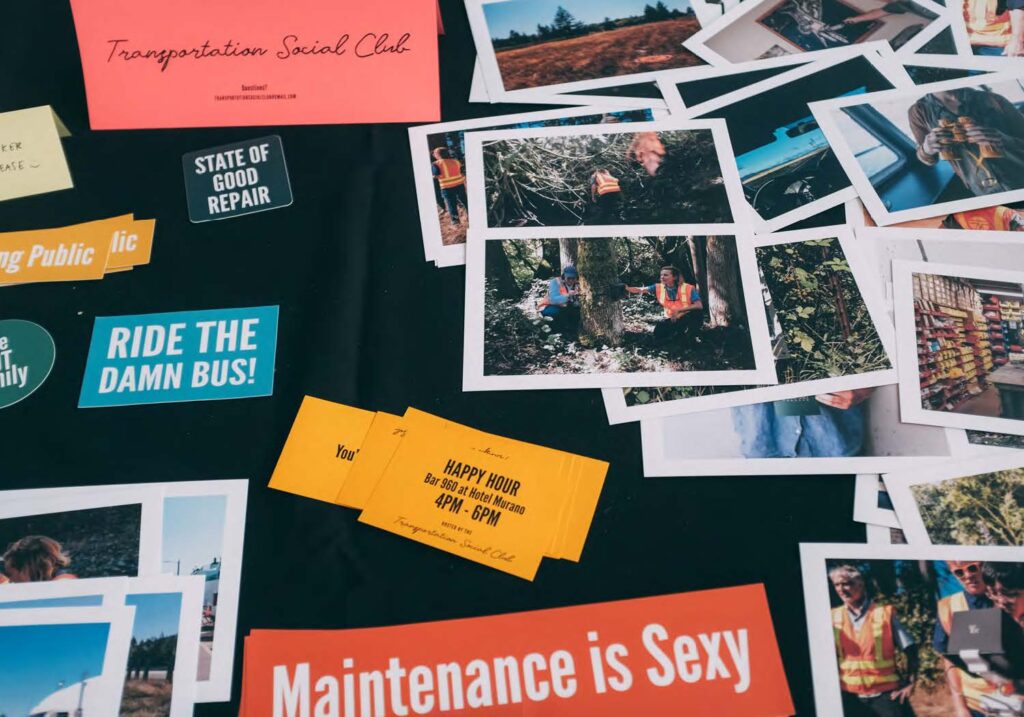
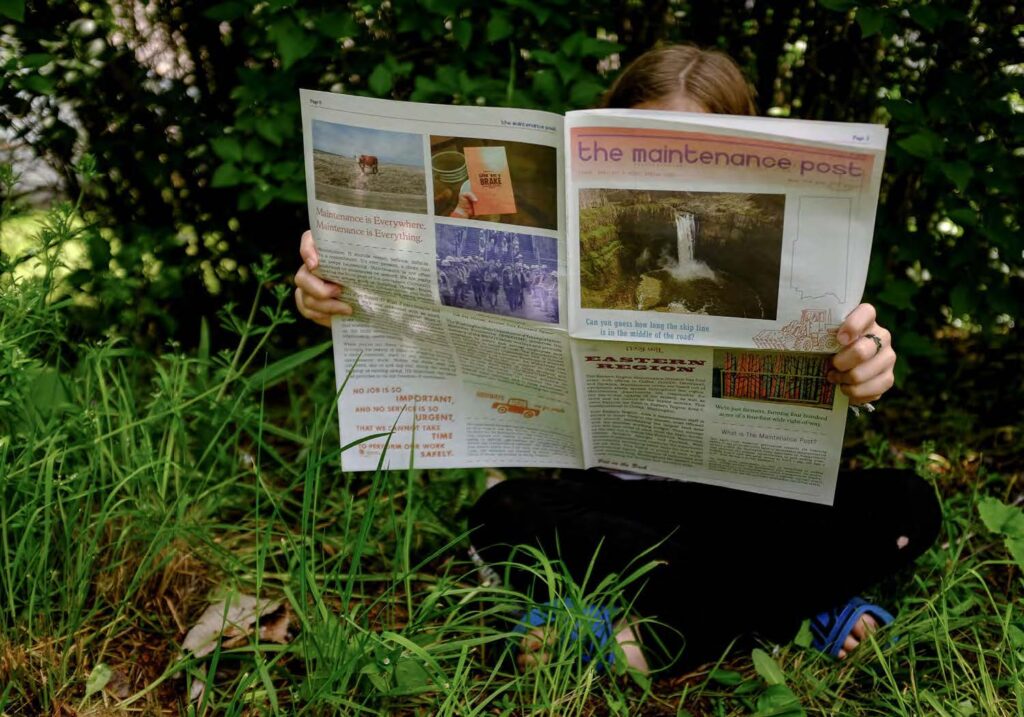
Some of these products will be available for purchase from this publisher in early 2021.
“Understanding the people’s dynamic of a place means we can build systems for nurturing, for challenging, for listening, and for imaginative magical thinking.”
– Kelly Gregory, Artist-in-residence, WSDOT
MnDOT’s artist in residence
Jessica Oh, the Highway Sponsorship Program Director at MnDOT described how well the AiR program—which MnDOT calls their Community Vitality Fellowship—lines up with MnDOT’s values and strategic plans of acknowledging the importance of place; uplifting community voices and assets; and strengthening relationships with a wide range of stakeholders.
This program has involved deep thinking on the following ideas:
- How to build innovative and different partnerships—with artists, arts and culture organizations, and more—to improve transportation outcomes;
- How to embrace innovation, flexibility and creativity;
- How to be responsive to communities, elevate their voices, and elevate the cultural values within a community in the transportation system;
- And how to address the impact of transportation facilities.
Similar to Gregory and Welcome, artist Marcus Young 楊墨 was hand selected by MnDOT and SGA and started his residency by listening to staff and their priorities. Based on that, he identified just how important it would be that his projects provide space for staff to be their whole selves, to be creative, to gather in new ways, and most importantly bring more humanity to their work and transportation as a whole.
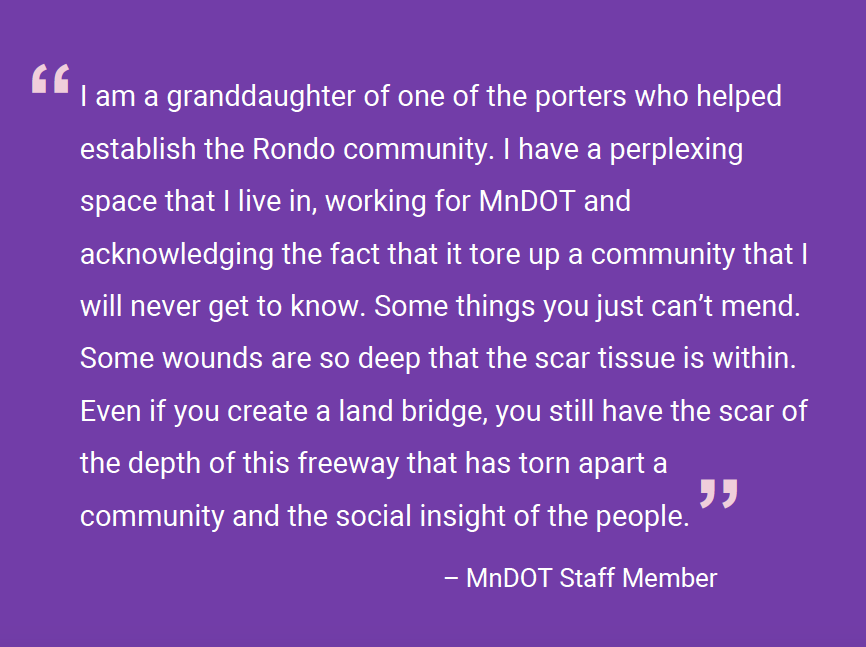
This led to Young focusing his time on the creation of three projects:
- The Land Acknowledgement Confluence room, a repurposed conference room where staff will be able to gather, be creative, and explore new everyday cultural practices of land acknowledgment. Through his residency Young has had numerous conversations on land acknowledgement, he hopes that this room can help ensure those conversations continue in the future. He remarked that it will not only be a place, but it will be “a placeholder so that we can all practice acknowledging land in better ways. And by acknowledging land in better ways, we acknowledge history. We acknowledge our whole selves in different ways.”
What is a land acknowledgment? “An Indigenous Land or Territorial Acknowledgement is a statement that recognizes the Indigenous peoples who have been dispossessed from the homelands and territories upon which an institution was built and currently occupies and operates in.” Learn more at http://landacknowledgements.org/
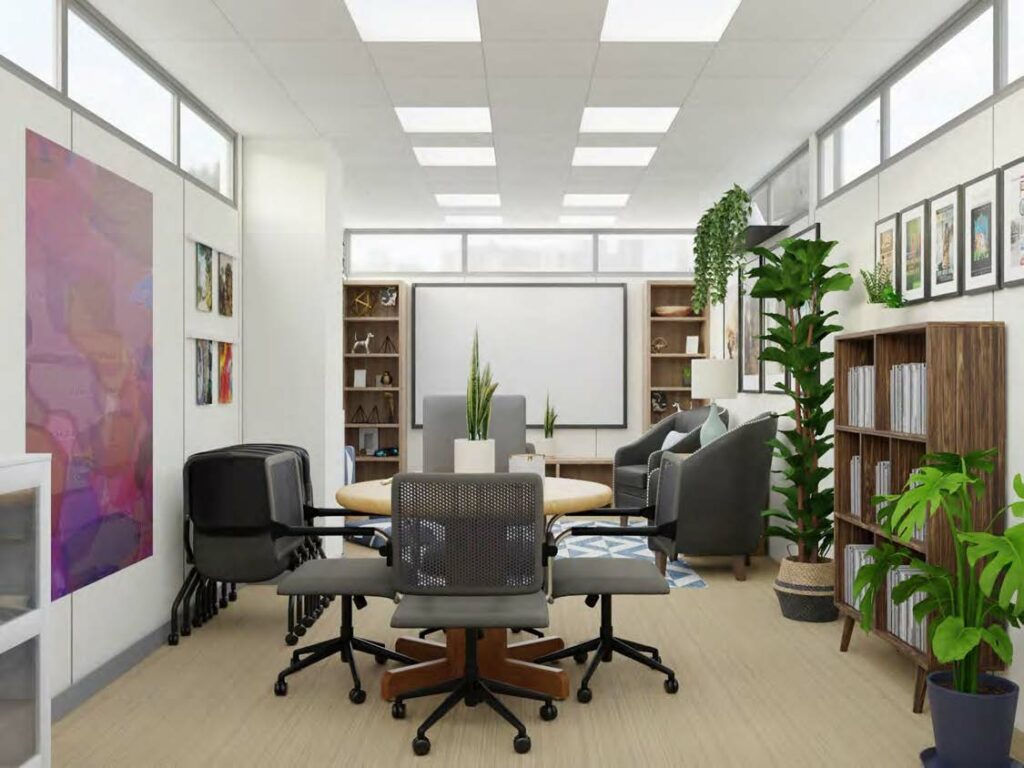
- A Sense of Place Convening that would bring 90 MnDOT leaders together for an intensive day-long event. As part of this convening, Young would use creative exercises and the Open Space Technology method to help participants generate ideas on how MnDOT can elevate placemaking and placekeeping within its work on livability, quality of life, public engagement, equity, economic development, and partnership with communities. This was fully planned, but unfortunately had to be rescheduled due to COVID-19.
- A Creative Conversations discussion series tackling topics such as equity, land acknowledgment, sustainability, and imagining what’s possible during this period of great change.
Be it converting unassuming conference rooms or holding space for conversations in unique ways, Young’s overarching message is that the potential of art is hidden everywhere, and you don’t necessarily need to be a professional artist to unearth it:
“If you create a space where we can gather and really work on things together, [you realize] that the potential of art is hidden not only everywhere, but within everyone.”
– Marcus Young, Artist-in-residence, MnDOT
What’s next?
Stay tuned for more resources from Smart Growth America and T4America on state DOT AiRs. We’ll be releasing new resources on this topic in early 2021 and providing updates as MnDOT enters year two of its program. You can also sign up for arts and culture-specific updates from us here.
If you are interested in starting up an AiR at your department of transportation or transit agency, we’d love to hear about it! You can reach Ben Stone, our Director of arts & culture at bstone@smartgrowthamerica.org.



















